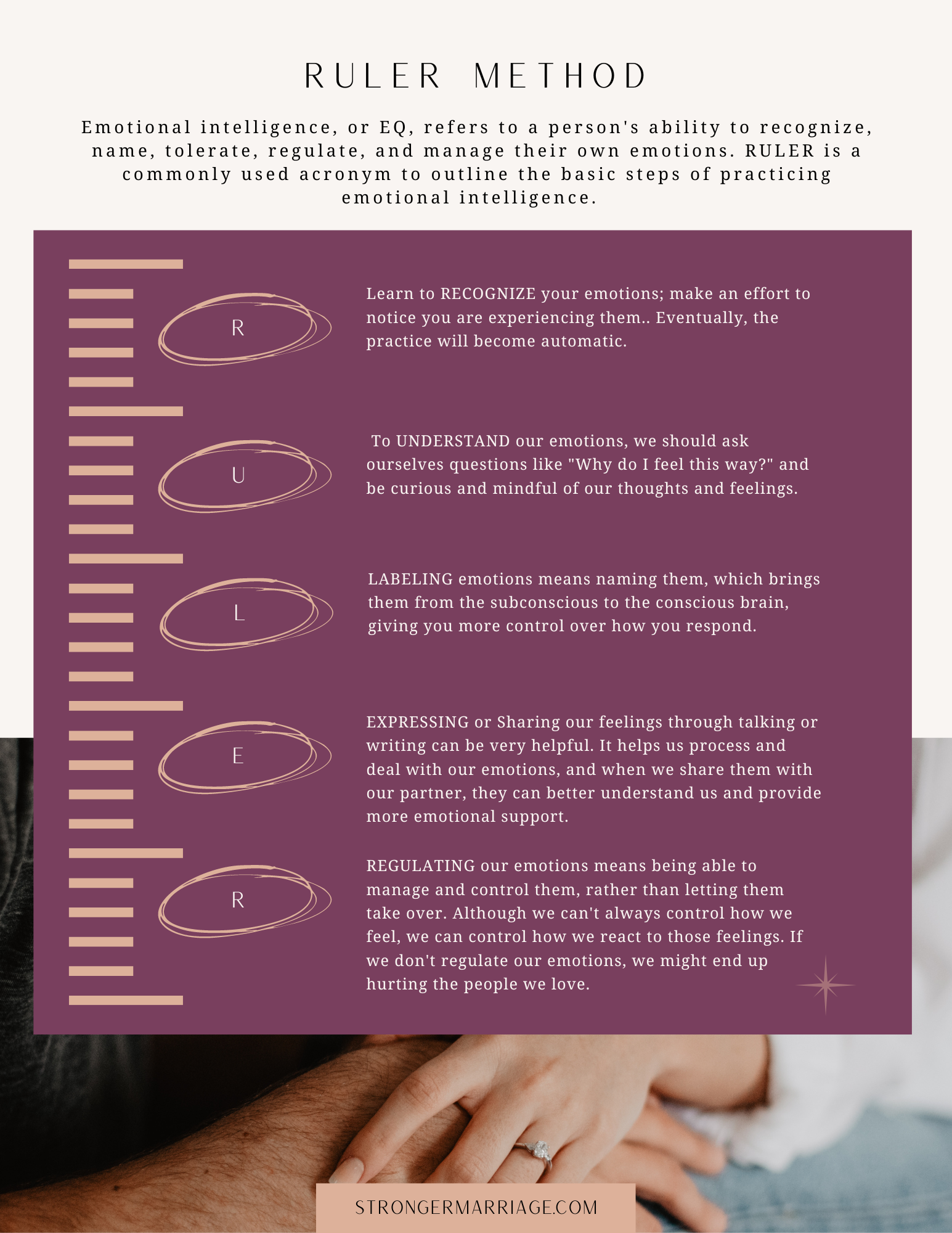
How do I process my emotion?
Hollywood, in my opinion, is just plain wrong when it comes to portraying emotional regulation. It's frustrating to watch movies or shows about emotions and see them get it so wrong. However, there is one shining exception to this rule - Disney Pixar's Inside Out. They absolutely nailed it! The movie's visual representation of how Riley's emotions control her like a robot while she remains unaware of what's happening is spot on.
Realizing that our emotions control us like a robot requires intentional effort, dedication, and practice, but it is crucial to develop this emotional awareness. Without it, Joy, Anger, and Sadness will have to fight each other or journey through our deep, dark, subconscious abyss in order to get the proper attention they need. When our emotions are fighting for the same space or lost in our subconscious, there is a high risk of hurting people important to us, including our partner. This means that developing emotional awareness is crucial to creating strong relationships.
RULER
Emotional intelligence, or EQ, refers to a person's ability to recognize, name, tolerate, regulate, and manage their own emotions. RULER is a commonly used acronym to outline the basic steps of practicing emotional intelligence.
R stands for recognize. To recognize our emotions, we need to learn how to identify them and make an effort to notice when we are experiencing them. The more we practice recognizing emotions, the easier it becomes until eventually, your mind and body will do it without having to think about it.
U stands for understand. This means that we need to practice figuring out why we feel a certain way by asking ourselves questions like "Why am I feeling happy or sad?" or "What caused this emotion?" This requires us to be curious and aware of our thoughts and feelings. U requires a lot of mindful curiosity.
Both the R and U in RULER are exercises in mindfulness. Mindfulness is the act of being present and fully engaged in the moment, while also being aware of how the people, situations, and circumstances around us are impacting our thoughts, emotions, and physical sensations. Mindfulness can be difficult, but the good news is that your mind is like a muscle. The more you practice mindfulness, the easier it becomes. For more information about how to incorporate mindfulness in your relationship, watch the November 10, 2021 Utah Marriage Commission Webinar “Mindfulness in Marriage” by Dr. Brad Simpson. While recognizing and understanding your emotions might require a lot of energy right now, the more you practice it, the more natural it will become.
L stands for label. Put simply this means giving a name to the emotion you are experiencing. Doing this brings the emotional experience from the subconscious region of the brain to the conscious region in the brain. This allows you to have more control over how you respond to your emotions instead of reacting impulsively.
E stands for express. Talking or writing about our emotions can be powerful. It allows our brain to process and work through them. When we express our emotions with our partner, it communicates to them what we are feeling and helps them understand our experiences. This can lead to greater emotional support.
R stands for regulate. This means that we have the ability to manage and control our emotions rather than letting them control us. While we cannot control the emotions we experience, we can control our responses to them. Failing to regulate our emotions can put us at risk of hurting those we care about.
Practice Exercise
Learning to recognize our emotions can be one of the biggest challenges to utilizing the RULER technique. To help with this, you can try a useful exercise from Trauma-Focused Cognitive Behavioral Therapy to practice noticing where you feel emotions in your body. The task is to write down at least 20 different emotions, such as happy, sad, jealous, lonely, excited, scared, exhausted, connected, frustrated, and confused. Then, imagine the last time you experienced each emotion and notice where in your body you feel it. Visualize a scanner scanning your body from head to toe and make a note of where in your body you experience each emotion. You can use a blank outline of a human body and some crayons or colored pencils to color the place on your body where the scanner lights up for each emotion, using different colors to represent different emotions. When you're finished, you'll have a better understanding of how your body experiences emotions overall, and you'll be able to articulate what your body is trying to communicate to you when that part of your body is activated in the future. To strengthen your relationship with your partner, ask them to do the exercise too and have a conversation about each other's experiences. Talk about how you can use this information to support each other in managing your emotions.
Managing our emotions can be challenging, but with the RULER Acronym, we can simplify the process. Learning to Recognize, Understand, Label, Express, and Regulate our emotions can be helpful to manage our emotions safely and effectively. It's important to remember that managing our emotions isn't an overnight process, and it requires patience and practice. But with time and effort, we can learn to be more in control of our emotions and prevent them from negatively impacting our lives and relationships.
Written by Maren Hirschi, LCSW

